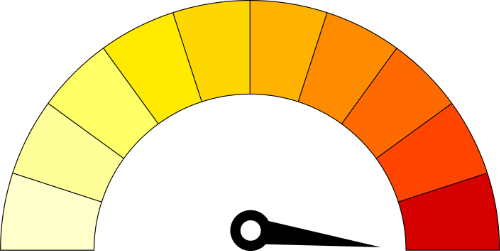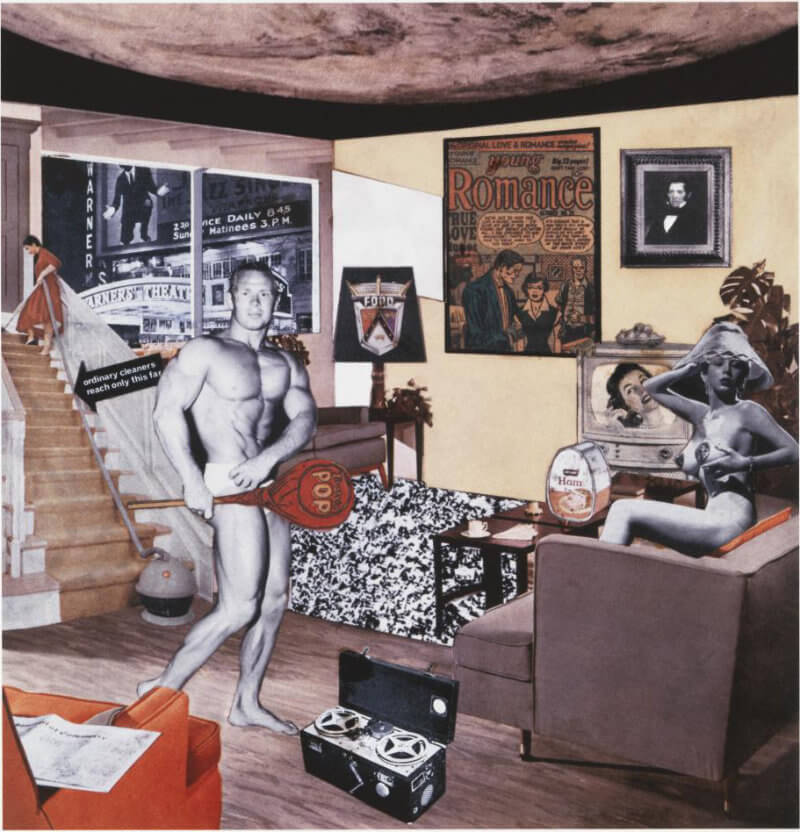This post is part of a larger deep dive
Curious about the role of free-association and the Activation-Synthesis Theory in The Elephant Celebes? Check out The Elephant Celebes Explained!
Or read the full The Elephant Celebes article!
This post is part of a larger deep dive
Curious about the role of free-association and the Activation-Synthesis Theory in The Elephant Celebes? Check out The Elephant Celebes Explained!
Or read the full The Elephant Celebes article!
Artist: Max Ernst
Year: 1921
Medium: Oil on canvas
Location: Tate Modern, London, UK
Dimensions: 125.4 cm x 107.9 cm
Original Title: Celebes

Our rating

Your rating
Although I consider myself an ardent fan of surrealism, I’m ashamed to admit I only came across Max Ernst’s works in a not so distant past.
And that is quite embarrassing.
After all, and despite lacking the fame of a Salvador Dali or Pablo Picasso, Max Ernst is indisputably a central figure in the surrealist movement.
In this article, I will analyse one of Ernst’s paintings which has become, arguably, the face of surrealistic art: The Elephant Celebes.
The Elephant Celebes was painted by German surrealist artist Max Ernst in 1921.
The composition is made up of several seemingly unrelated elements. The most obvious one is a central mechanical monster with an appendage with horns at the end. On the right of the monster, we see a decapitated female mannequin wearing a surgical rubber glove, a totem-like sculpture and a circular gold object. There are two vertical poles on the left of the monster, and at least two flying fish at the top left corner.
The background looks something between water and sky, and the presence of the fish has led some to suggest the setting is underwater.
The work as a whole looks and feels quite surrealistic, and it is indeed considered one of the earliest examples of surrealistic painting.
At the time Ernst painted The Elephant Celebes, surrealism had yet to be invented. However, proto-surrealistic movements had already been founded.
For example, Ernst was greatly inspired by the works of Italian painter Giorgio de Chirico, who invented metaphysical painting, a precursor of surrealism. That inspiration is seen in the way Ernst depicted various unrelated objects occupying the same space, as well as the way Ernst employed neutral colours with hardly any bright areas.
De Chirico’s influence is also directly seen in certain elements used, such as the bust and the surgical/rubber glove, common thematic elements in de Chirico’s paintings.
Ernst himself was pioneer in the art movement Dadaism, which had a tremendous influence in later surrealists. In short, Dadaism used humour and absurdity to mock social and conventional artistic values.

One of Dadaists’ favourite methods was that of collage – the usage of different materials such as paper, photographs or cloth arranged onto a single surface. Collage proved to be a useful tool for Dadaism because of its potential to create random works.
Despite using a single medium (oil on canvas), Ernst attempted to simulate different materials so as to give it a collage effect in The Elephant Celebes.
Cubism was also another movement that predated surrealism and greatly influenced it. Cubist motifs are present in the Elephant Celebes as seen, for example, in the “head” of the monster.
Ernst’s stature as one of the founders of surrealism is unquestionable. He surely had the talent and creativity that places him among the greatest surrealists of the 20th century.
Unfortunately, I’m not very excited about this particular work.
As you will notice from my analysis below, The Elephant Celebes is a tad too much “random” for my taste. Ernst rarely elaborated on the meaning of his paintings, and the viewer is left piecing together an impossible narrative.
In my opinion, when presenting an extreme bizarre artwork it is often beneficial to include at least an element that links different aspects of the composition.
This usually gives the viewer a sense of completion and self-containment. Even if the viewer cannot consciously pinpoint what that central element is, I wholeheartedly believe that this is a process that can also operate at an unconscious level.
With The Elephant Celebes I feel that central link is lacking, and the result is an absurd and unfathomable composition.
Here at Mindlybiz, The Elephant Celebes gets a rating of 2.5.
Weird! Definetely weird!
The possibility that Ernst let his mind wander and paint whatever cropped up in his mind via free-association and dream imagery can really only lead to one result: bizarre!
The combination of elements don’t make any sense and there isn’t a common thread connecting the disparate elements of the painting. It is difficult for me to imagine a weirder artwork.
The Elephant Celebes gets a bizarrometer score of 5.
When analysing an extremely bizarre work of art one of the things I do first is to get a gist of the message of the painting by looking at connecting features among the different elements. The Elephant Celebes has none.
As already mentioned in the Review section, Ernst was one of the founders of an art movement called Dadaism. Dadaism encouraged things like spontaneity, chance and randomness when producing an artwork, such that the end-result would defy formal and traditional artistic values.
It is likely that Ernst stayed true to this principle with The Elephant Celebes.
First, even though the work consists of a single medium (oil on paint), the collage effect often employed by Dadaists is clearly visible. This is a first indication that the work in question is mostly the result of chance encounters.
Second, having been influenced by the works of Freud, it is a possibility that Ernst let his mind wander freely, as the psychoanalytical technique of free-association dictates. Not only that, but dreams were a recurrent source of artistic creativity during the 1920s, so it is not unlikely that Ernst attempted to free-associate using his own dreams.
If we combine these two random aspects of artistic creation, we get a result which is just that: a random narrative. I believe there is no link that chains the disparate elements of the painting.
There could be allusions to the war (e.g., flying fish, smoke) and to the psychoanalytical theories of Freud (e.g., totem-like sculpture, round hole on the mechanical monster), but it isn’t clear if Ernst intended for these ideas to be related at all. Probably not.
This is even truer if we consider dreams as reflecting random activity in the brain. What do I mean by that?
Keep on reading to find out.
This painting from Max Ernst is a masterpiece. Yes, Max used borrowed elements from other paintings but that should not confuse anyone as to what the painting is about. The painting was about how Europe after having experienced the first industrialized war in humanities history should have been doing everything in their power to never revisit such destruction and horror. This he had witnessed first hand as a soldier in WW1 for 4 years. Instead just 3 years after such a horror – Europe began lumbering towards an even more mechanized industrial conflict. Hitler and the other Fascists had after all moved from political rants and grumblings in beer halls in 1921 to a shooting revolution just 2 short years later (Beer Hall Putsch). Therefore Ernst paints the sky as apocalyptic in prediction of the future which he felt in his bones or perhaps subconscious was coming. The confusion of Europe and particularly Wiemar Germany and the decapitated Austrian Hungarian Empire where women were then permitted to have some rights is represented as a nude beheaded manikin leading the lumbering industrial war machine (Celebes).
I found this site looking for an image of the back of the Elephant Celebes for a sketch I am working on for a different composition. Therefore to understand why this painting is as important as Starry Night must be understood from the perspective of WW1 and the defeated Axis nations. Hyper inflation was raging in the ragged economies Axis economies. In 1921 the German currency became so inflated a US dollar was equal to 4,210,500,000,000 marks in 1921. Yes that was trillions of Marks to a single US dollar. Therefore surreal yes but within a very surreal existence for Max and most others at that time.
Hi Leo,
Thank you for your comment and analysis of the painting!
I briefly linked some of the elements of the painting to WWI but, honestly, felt that the more parsimonious explanation of being the product of free-association more likely.
For example, the idea for the mechanical monster appears to have been taken from an anthropological magazine, and it seems unlikely that Ernst based the idea of the elephant from his war experiences (a horse would have been more fitting, for example). More likely, Ernst found the idea of an elephant amusing, either in connection to the German satirical verse, to the elephant-shaped Indonesian island called Celebes, or simply to the shape of the clay corn bin.
Also, Ernst’s interest in Freudian theories, particularly the free-association technique, and their increasing relevance to the surrealists of the time might also indicate Ernst’s work mode. The decapitated nude female and the surgical glove are most likely influences from de Chirico, given the recurrence of these elements in the latter’s works (Ernst was also a great admirer of de Chirico’s paintings).
So, given these points, and a lack of analysis of the work by Ernst himself, I saw The Elephant of Celebes more as an experimental creation in the very early surrealistic movement rather than a homogenous symbolic artwork.
Of course, it’s just my interpretation. As you said, there is the possibility that Ernst’s “random” ideas may have been used within the scaffold of a larger and more meaningful idea, which Ernst remained silent about. It was that scaffold linking these seemingly random elements that I tried to identify in my analysis, but, in the end, I wasn’t convinced I’d found it…
Outstanding
Elephant Celebes
Okay, let’s break down “The Elephant Celebes,” which Ernst cooked up in 1921. Imagine stepping into a dream where nothing makes total sense, but it’s intriguing as heck. In the center, there’s this funky-looking elephant creature, all twisted up and wearing strange stuff. Around it are these mysterious shapes and structures, like something out of a surreal fairy tale.
Many thanks for your review!
Indeed, I agree that the entire painting looks as though we are viewing someone’s macabre dream, full of weird surrealistic elements.
You rated it 4.5 stars, is there any particular aspect of the painting that you consider exceptional?